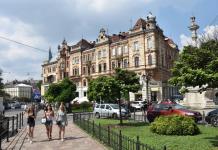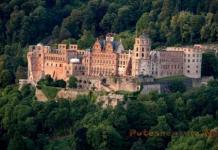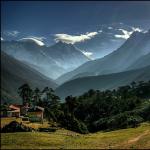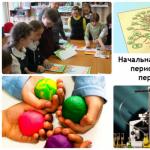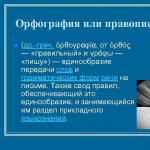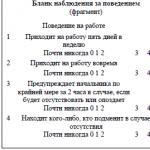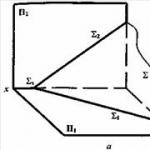Photo reports and reviews about the trip and visit to the attraction Copan Monastery. Photo report about Kopan Monastery, history, where it is located
Copan Monastery: detailed information
Report an inaccuracy in the description
Kopan Monastery is a Tibetan Buddhist monastery of the Gelug school in Nepal. The monastery is located on the top of Kopan Hill on the outskirts of Kathmandu, not far from the Boudhanath Stupa.
The monastery was founded by Lamas Thubten Yeshe and Thubten Zopa Rinpoche, who purchased the land from the Nepalese royal astrologer in 1969.
Kopan Monastery is especially famous for teaching Buddhism to foreigners. The first month-long meditation course was conducted in 1971. Since then, hundreds of Europeans come to Copan throughout the year. These courses combine traditional Lamrim teachings, informal discussions, meditation and a vegetarian diet. Courses lasting 7-10 days are conducted on average once every 2 months.
Book a hotel in Kathmandu, Kathmandau
- Review of the Copan Monastery. This is a famous monastery of the Tibetan type of the Gelugpa school. The monastery is located about five kilometers north of Boudhanath Stupa. Actually, these are two monasteries - the male Kopan and the female Khacho Khaki Ling, where about 500 monks and nuns from Tibet and Nepal live and study. The monastery is known far beyond the borders of Southeast Asia for its methods and methods (Gelukpa school, founded in the 14th century) of introducing Mahayana Buddhism, it is accessible to Europeans and ten-day and monthly periods have been created for them...
- Review to The wonderful, well-groomed, perfectly clean territory of the monastery, the wonderful colors, decor and architecture of the temple buildings, some kind of pristine silence create a state of joy, calm and tranquility. It becomes clear that in this atmosphere of peace of mind one can fruitfully immerse oneself in meditation and in studying the fundamentals of Buddhism.
- Review to On the territory of the monastery there are several temples, a large prayer wheel with the mantra “Om Mani Padme Hum”, a Tibetan Buddhist stupa-chorten. The last one is especially beautiful. This is a real work of art. The stupa is located in a large clearing, overlooking the city, and the monastery itself lies slightly below this clearing. You can climb a small staircase to the very top of Copan Hill, and from there it looks incredibly picturesque and charming.
- Review of the Tibetan stupa - chorten, on the one hand, symbolizes the Universe, on the other hand, in the exoteric aspect, it symbolizes the five substances into which the human body breaks down after death. Any stupa-chorten is built for a reason, but as a repository for some relics of Buddhism or in honor of some Buddhist events. In addition, they are built according to certain canons emanating from the teachings of the Buddha. At the base of the stupa there is a square, which in space forms a cube and on it there are several...
- Review to Kopan
- Review to Kopan
- Review to Kopan
Turning off the camera and taking off my sneakers, I hesitantly walked up to the open door and saw girls with close-cropped hair in burgundy clothes and strange berets on their bald heads arranged in even, dense rows. They all, sitting in the lotus position, sang enthusiastically and rang bells. In front of them, on low benches, lay various ritual objects necessary for the service.
The nun at the entrance invited me in and showed me the direction. ...but I didn’t dare... Because for the first time in my life I found myself serving in a functioning Buddhist monastery.
The Hindus, who quickly crowded behind me, persistently asked me to move and give them way. Seeing how they unceremoniously marched along the perimeter of the temple to the altar, I also decided to enter and, reaching the end of the hall, sat down under the window.
The nun on duty, already familiar to me, brought me a soft pillow so that I would not have to sit on the floor, although it was wooden, but still cold! Having settled down behind everyone, I perfectly saw everything that was happening in the hall and gradually began to make out the words and motives of the chants! YAY!!! I learned some of the mantras!!! That's how it dawned on me that I was at a puja!!!
Only it was a big puja - ganapuja, and it was carried out in an expanded format according to the monastic order! The action captivated me so much that I involuntarily joined the harmonious choir of singers and began to sing familiar places along with them! The sounds of big drums and small drums, bells and horns, a friendly sharp PHET, had a life-giving effect on every cell of my entire being!!! Having lost track of time, my soul rejoiced and my body soared!!!
They rushed around the hall to distribute some food, as required by the ritual. From a distance it looked like our breakfast cereals or oatmeal, such as muesli. The next girl carried something that strongly resembled puffed rice, most likely it was this. Another began to pour something out with tiny ritual spoons. At this time, another young lady from Australia joined me (I found out about this after the end of the service).
A crowd of Hindus followed her! Without exception, the person on duty at the temple or at the service (I don’t know what they call it correctly) offered pillows for a soft place. And a pandemonium formed in our corner. I was pushed and shoved from all sides. The women were clutching their bags. Someone managed to step on me. Someone leaning on his elbows feels like one’s own! One word - Indians!
...but I was so high that all this Hindu fuss and bustle didn’t bother me at all. And yet, to my complete happiness, the Indians were not enough to sit in one place for a long time, and what’s more, to remain silent! And the bulk of them quickly gathered and subsided, creating another wave of fuss and hubbub, leaving their seat cushions for me.
At this time, the last nun who was distributing some small pieces, having bypassed all the practicing nuns, went to us and also gave each of those present a tiny piece of some unusual food. In appearance it didn’t resemble much... perhaps it was very old and weathered chocolate???
Kopan Monastery (Nepal) - description, history, location. Exact address and website. Tourist reviews, photos and videos.
- Tours for the New Year Worldwide
- Last minute tours Worldwide
A corner of the unity of nature and man, harmony and self-contemplation is located within the walls of the Kopan Monastery, a popular place for studying Tibetan Buddhism in Nepal. The meditation retreat is located on a hilltop just north of Boudhanath Stupa, one of the main Buddhist shrines in the Kathmandu Valley, and the views from it are stunning.
The monastery was founded by lamas Thubten Yeshe and Thubten Zopa Rinpoche and named it after this hill. Khacho Ghaki Ling Nunnery is located nearby. Today, more than five hundred monks and nuns live and study within the walls of both monasteries, and since the 70s, pilgrims from all over the world began to come here.
How to get there
From Kathmandu Airport to Kopan you can take a taxi for 1000 NPR. The monastery is open from 9:00 to 19:00. Since Kopan is located in the suburbs of Kathmandu, it takes 20 minutes to reach it by car from Boudhanath Stupa. It costs 300-350 NPR. Prices on the page are as of November 2018.
Search for flights to Kathmandu
Rules for visiting and meditation courses
For those who have no idea what it means to live in a monastery, the ministers of Copan have worked hard and published a kind of manual and set of rules of behavior. The monastery is considered the spiritual oasis of Kathmandu, an international center for the study of Buddhist philosophy and meditation.
Local meditation courses are based on traditional teachings of the lam-rim, a textual guide to the steps to awakening. The most popular courses last 7-10 days, which take place every 2 months. The classes are accompanied by an intensive 3-day meditative immersion under the guidance of experienced masters. The cost of the course is 62,000 NPR, in November the course will cost 103,000 NPR. Here you can also take a course of fasting in solitude (Nuung-nyes) to cleanse the spirit and body.
- Address: Kathmandu 44600, Nepal
- Telephone:+977 1-4821268
- Website: kopanmonastery.com
- Founders: Thubten Yeshe, Zopa Rinpoche
- Opening year: 1972
- Affiliation: Tibetan Buddhism
Historical reference
The shrine was founded in 1972 by Lamas Yeshe and Rinpoche on lands that once belonged to the royal court. It is noteworthy that, in addition to the Kopan monastery, the temple complex includes the Khacho-Ghakyil-Ling nunnery. Today, over 7 hundred monks and nuns who came from Tibet and isolated areas of Nepal live and study in the monastery.


Meditation courses
Recently, the doors of the Kopan monastery in Nepal are open to everyone. For the convenience of pilgrims and monks, the abbot has developed a special set of rules that must be followed. To learn the basics of Buddhist philosophy and immerse yourself in healing meditations, just enroll in a special group. The most popular are short courses based on Lamrim teachings. The course is recruited every 2 months. Classes include meditative dives, lectures, and special diets. The cost of the course will be on average $60. In addition, at the monastery you can take the Nuung-nyes fasting course, which cleanses the body and spirit.


Accommodation at the shrine
Guests of Copan undergoing training live at the monastery in comfortable rooms for 2-3 people. Payment per day - $7.5. Monks and pilgrims eat together, and exclusively vegetarian dishes.


How to get there?
You can get to the place by public transport. The nearest stop is Simaltar Chowk Bus Station, located 500 m from the target. Buses from different areas arrive here. You can also order a taxi or rent a car. You can get to the Copan Monastery on your own using the coordinates: 27.7420555, 85.3622648.



